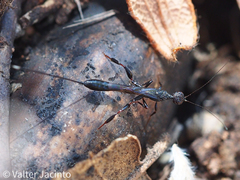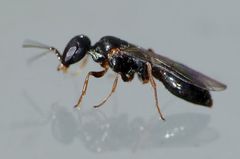Raphidiidae

The Raphidiidae family, commonly known as snakeflies, is a unique group of insects belonging to the order Raphidioptera. These fascinating creatures are characterized by their elongated necks and appearance that loosely resembles that of a snake, which is how they earn their common name. They are primarily found in temperate regions and are a part of the diverse fauna of the Comunidad Valenciana.
Key Characteristics:
- Appearance: Snakeflies are known for their distinctive elongated prothorax, which gives them a "neck-like" appearance. They have membranous wings that they fold tent-like over their elongated abdomen when at rest. Adults typically measure between 15 to 25 mm in length.
- Wings: They are equipped with two pairs of transparent wings that are an important feature for identifying this family of insects. The wings have a clear network of veins and are held straight along the body.
- Diet: Both larvae and adults are predatory and commonly feed on soft-bodied insects such as aphids, making them beneficial for natural pest control.
- Habitat: Raphidiidae are primarily found in woodland areas, where they enjoy plenty of sunlight. They are more abundant in regions with a Mediterranean climate, such as the Comunidad Valenciana.
Life Cycle: Snakeflies undergo a complete metamorphosis with life stages including egg, larva, pupa, and adult. The larval stage can last up to two years, during which they live under bark or in leaf litter, actively hunting for their prey.
These captivating insects are an integral part of the ecological landscape in the Comunidad Valenciana and contribute to the balance by controlling pest populations naturally.







